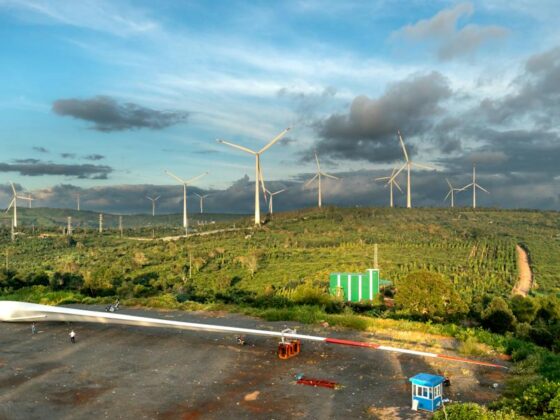In today’s rapidly changing world, businesses are increasingly realizing the importance of sustainability and the need to mitigate their carbon footprints. The rise in global temperatures, climate change, and growing concerns about environmental degradation have forced companies to reevaluate their operations and seek innovative solutions to reduce their carbon emissions. One such solution that has gained significant attention is the strategic use of carbon credits. Carbon credits provide businesses with a means to offset their greenhouse gas emissions by investing in sustainable projects. This article explores the strategic role of carbon credits in business sustainability, highlighting their benefits, challenges, and potential for driving positive change.
The Concept Of Carbon Credits:
Understanding Carbon Footprints:
Before delving into the strategic role of carbon credits, it is essential to understand the concept of carbon footprints. A carbon footprint is the total amount of greenhouse gases, primarily carbon dioxide (CO2), emitted by an individual, organization, or product throughout its lifecycle. It encompasses emissions from direct sources such as fuel combustion, as well as indirect sources like electricity consumption and supply chain activities. By calculating their carbon footprints, businesses can identify areas of high emissions and develop targeted strategies for reduction.
Carbon Credits and Trading:
Carbon credits, also known as carbon offsets, are a market-based mechanism designed to incentivize greenhouse gas reduction projects. These projects aim to counterbalance or compensate for emissions generated by organizations. For each ton of CO2 or equivalent greenhouse gases reduced or removed from the atmosphere, a carbon credit is issued. These credits can be bought, sold, and traded on various carbon markets. By purchasing carbon credits, companies essentially invest in sustainable projects that reduce emissions, such as renewable energy initiatives, reforestation, or energy efficiency programs.
The Strategic Role Of Carbon Credits:
Driving Emission Reductions:
Carbon credits play a crucial role in driving emission reductions by providing businesses with a viable pathway to offset their carbon footprints. By investing in certified projects that generate carbon credits, companies actively contribute to the development of sustainable solutions. The revenue generated from carbon credit sales can fund renewable energy projects, support local communities, and drive innovation in clean technologies. Through strategic partnerships and investments, businesses can actively participate in the transition to a low-carbon economy.
Enhancing Corporate Social Responsibility:
Integrating carbon credits into a company’s sustainability strategy enhances its corporate social responsibility (CSR) by demonstrating a commitment to environmental stewardship beyond regulatory requirements. This proactive approach sends a powerful message to stakeholders, customers, and employees, showcasing dedication to mitigating climate change, preserving ecosystems, and supporting impacted communities. By aligning with broader societal and environmental goals, businesses actively contribute to carbon reduction efforts and promote sustainable development. Additionally, examples of carbon trading further exemplify the strategic role of carbon credits in enhancing CSR, fostering collaboration and innovation in carbon mitigation strategies. Through these efforts, companies make a positive global impact, such as supporting renewable energy projects and reforestation initiatives and promoting equity in addressing climate challenges.
Strengthening Brand Reputation:
Brand reputation is a valuable asset for any business, and sustainable practices can significantly enhance it. Integrating carbon credits into a company’s sustainability initiatives showcases a genuine commitment to reducing environmental impact. This can attract environmentally conscious consumers who prefer brands with strong ethical and environmental values. By investing in carbon credits, companies can differentiate themselves from competitors, position their brand as an industry leader in sustainability, and build long-term customer loyalty. A strong brand reputation built on sustainable practices can yield both financial and non-financial benefits in the long run.
Addressing Challenges and Ensuring Credibility:
While carbon credits offer an effective tool for emissions reduction, challenges exist that need to be addressed to ensure credibility and effectiveness. One key challenge is the need for robust measurement, reporting, and verification (MRV) mechanisms to accurately quantify emission reductions and guarantee the integrity of carbon credits. Additionally, transparency and traceability in the carbon credit market are crucial to prevent fraud and misrepresentation. It is essential for businesses to carefully select reputable carbon credit providers and projects that adhere to internationally recognized standards, such as the Verified Carbon Standard (VCS) or the Gold Standard.
Unlocking Innovation and Collaboration:
Carbon credits present an opportunity for businesses to unlock innovation and foster collaboration in the pursuit of sustainable solutions. By investing in carbon offset projects, companies can support research and development efforts in clean technologies and renewable energy. This not only contributes to the growth of the green economy but also enables the sharing of knowledge and best practices among industry peers. Collaboration between businesses, governments, and non-profit organizations can lead to the development of scalable and impactful projects that drive significant emission reductions. Through partnerships and collective action, companies can pool resources, expertise, and funding to address complex sustainability challenges and accelerate the transition to a low-carbon future.
Building Resilience and Adaptation:
In addition to driving emission reductions, carbon credits can play a strategic role in building resilience and adaptation strategies within businesses. As climate change continues to pose risks to supply chains, infrastructure, and operations, companies need to consider measures to adapt to changing conditions. By investing in carbon credits, businesses can support projects that focus on climate resilience, such as initiatives aimed at protecting coastal areas, implementing sustainable agricultural practices, or developing water management systems. These projects not only help mitigate the impacts of climate change but also enhance the long-term sustainability and competitiveness of businesses by reducing vulnerability to climate-related risks. Incorporating adaptation strategies into carbon credit investments ensures a comprehensive approach to addressing both mitigation and resilience in the face of climate change.
As businesses strive to become more sustainable and reduce their carbon footprints, carbon credits offer a strategic solution for achieving these goals. By investing in carbon credits, companies not only offset their emissions but also contribute to the development of sustainable projects that drive positive environmental and social change. Carbon credits enhance corporate social responsibility, strengthen brand reputation, and attract environmentally conscious consumers. However, it is crucial to address challenges such as robust measurement and verification mechanisms to ensure the credibility and effectiveness of carbon credits.
In a world where climate change and environmental concerns are at the forefront, businesses must embrace sustainable practices and actively engage in reducing their carbon footprints. Carbon credits provide a tangible and impactful way for companies to offset their emissions and make a meaningful difference. By incorporating carbon credits into their sustainability strategies, businesses can take a significant step towards a greener and more sustainable future. It is the responsibility of businesses to recognize the strategic role of carbon credits and actively participate in the transition to a low-carbon economy. Together, we can create a more sustainable world for future generations.










